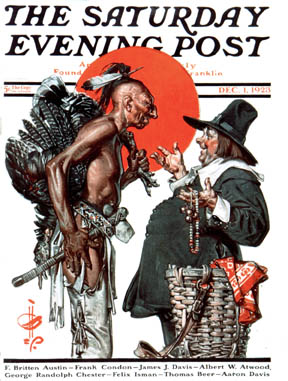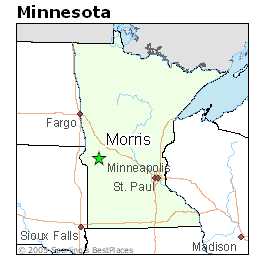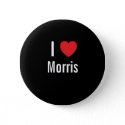 |
| Image from "artsmarttalk" |
Thus, Europeans and "redskins" (as they are known in the U.S. professional
football league) broke bread long before the Pilgrims.
We will be hearing about the Pilgrims again soon because we're in November.
Thanksgiving comes as we nervously await the arrival of winter. It's on the 28th
of this month. Winter cold will be here. The wild card is the snow and
snowstorms.
Remember that in 1991 we had the "Halloween blizzard."
A TV talking head recently said "Thanksgiving is on Thursday this year."
A TV talking head recently said "Thanksgiving is on Thursday this year."
I don't know how necessary Thanksgiving is. The Pilgrims reached Plymouth
in 1620. But it wasn't exactly like the first footsteps on the moon. The Spanish
explorers gave thanks and dined with Native Americans 56 years before the
Pilgrim "thanksgiving" at Plymouth. French Protestants founded a colony in
Florida in 1564.
A group of English explorers constructed a fort on Cuttyhunk Island in
1602. It would be difficult to romanticize that group of English. It would be
difficult teaching elementary-age schoolkids about them. This intrepid group
came to the new continent not because of religious freedom, but to seek riches
digging sassafras, a commodity prized in Europe as a cure for the clap.
Thanksgiving as it is marked today has wholesome images for the kids. It
accents the desired brotherhood of man. It's an ideal that exists too much in
theory. It might be good to remind kids that while the Pilgrims' travels were
significant, they didn't represent a "first" in the manner of the first moon
walk.
We are reminded each year, at the time of the New York City Marathon, of
the "Verrazzano Narrows Bridge" in the Big Apple. I remember when the National
Lampoon magazine had fun showing the bridge collapsing under the weight of the
teeming runners, as a "faux" news item. This is what satire is: a takeoff on
reality, not the kind of garbage a group of University of Minnesota-Morris
students recently gave us with that "Northstar."
Pity Giovanni da Verrazzano, an accomplished explorer not remembered nearly
as well as he should be. Thank goodness we at least have the bridge.
Giovanni da Verrazzano toured the U.S. eastern seaboard in 1524. 1524! He
was an Italian in command of a French ship.
In an episode that really should be established in our collective
historical grasp, a crewman was directed to swim ashore by the commander.
Natives were on shore. What an encounter: two civilizations from across a chasm.
Considerable trepidation may have crossed the mind of that crewman. If you ever
watched "Mutiny on the Bounty" with Marlon Brando, you realize how expendable
those crewmen were. (Brando was the "good guy" commander.)
Verrazzano's man arrived ashore where the natives took him to a fire. But
this was to warm him, not to roast him! This vignette ought to be taught like
the Pilgrims' story.
Verrazzano went north where he observed a wide bay and saw its potential
for commerce. This would be New York Harbor. Thus the gesture of naming the
bridge for him.
Unfortunately the story of the early explorer ends in tragedy. In 1528 his
ship arrived at a Caribbean island. The natives there were not hospitable. The
commander himself was seized and eaten.
Verrazzano may be obscure today in our sense of history, but in his time he
actually was renowned. His namesake bridge is across the narrows that he sailed
through in 1524. The marathoners go across that bridge en masse.
Then we have the Portugese who steered Spanish ships along both coasts in
the 16th Century.
Scandinavians will want to know why I didn't acknowledge them earlier in
this post. I'm half Norwegian and half Swedish. The Scandinavians truly have
everyone else beat in terms of explorers from across the sea. The early
Scandinavians had no peer as seafarers. These pagans are stereotyped in a way we
recognize with today's Minnesota Vikings football team.
How much is stereotype and how much is reality? Mel Brooks had fun with the
stereotype when he gave us "A Viking Funeral" as a faux movie preview at the end
of "History of the World Part I." Another thigh-slapper was "Jews in Space,"
another of his faux previews, remember? It says something about the movie
(negatively) that we might remember those segments at the end better than the
movie itself.
Brooks gave us genuine satire. Satire is based on something in reality and
gets its humor from stripping away pretense. Satire is not simply synonymous
with anything silly. UMM ought to give some instruction on this, lest we get any
more sophomoric and insulting publications creeping into our community,
offending our sensibilities and making us wonder why there can't be more "tough
love" out there. UMM is the "jewel in the crown" but you'd never know it by
looking at the "Northstar."
Those intrepid Scandinavians
Those intrepid Scandinavians
In 1961 we learned just how significant the early Viking seafaring was.
Archaeologists found L'Anse Aux Meadows on a grassy plateau. Radiocarbon dating
was employed. Those Vikings were over in our continent in the year A.D. 1000. In
1978, UNESCO named L'anse Aux Meadows its first world heritage site. It's the
only confirmed Norse settlement yet discovered in America, an assertion that
quickly invites the pained howling of Kensington Runestone proponents.
That cotton pickin' Runestone will never bring any resolution. The problem
is that no matter how strong the circumstantial evidence that it's fake - such
evidence is overwhelmingly strong - researchers can find all sorts of intriguing
angles to suggest otherwise.
I got drawn into that discussion in my print media career. The Runestone is
incredibly tantalizing. But it can be like a siren song: It draws you in,
distracts you, keeps you awake at night, and in the end the skeptics with their
overwhelming arguments just laugh you off.
I finally made a resolution to just stay away from it. If anyone asks, I'll
just say I think it's a fake. That's the only way I can find resolution.
The Vikings football team name exists because of the Runestone. That's an
incredible legacy.
Sagas are spoken accounts of the Viking age, A.D. 800 to 1050. The
sagas are based on reality but also have an eerie "twilight zone" that brings in
the paranormal, like the account of a woman seeking to use the latrine in the
middle of the night but who "found the path blocked by ghosts." (Somehow that
image has stayed in my head.) Translators took some liberty sometimes.
The biggest proponent of the Runestone today dismisses the stereotyped
image of Vikings as envisioned by the likes of Mel Brooks. Rather, he argues
that the evidence points to post-Pagan explorers. Hell, I don't know. But we
know that in 1620, the Pilgrims reached Plymouth. They had rejected Cape Cod.
We have the Plymouth Rock which tourists are shocked to discover is only
five feet square. Tourists there are known to ask strange questions. They might
ask if Christopher Columbus dropped off the Pilgrims.
Consider that there's a wide swath of time between 1492 and 1620. Was there
nothing consequential in between? Well of course there was. The restless human
spirit should make the answer to this question obvious.
By the time the first English settled, other Europeans had already reached
half of what would become the 48 states. The land over here was raw but known.
The Plymouth settlement had an enduring quality. The English persisted. Thus there was a myth of sorts born, of benevolent Pilgrim fathers seeding a new land with their piety and work ethic.
The Plymouth settlement had an enduring quality. The English persisted. Thus there was a myth of sorts born, of benevolent Pilgrim fathers seeding a new land with their piety and work ethic.
Let's sum this up in its essence: "History is written by the winners."
We will celebrate those winners on November 28.
Our city goes quiet
Our city goes quiet
Last year Thanksgiving was absolutely dismal in our community of Morris.
The once-thriving annual "community meal" had died, and I hear nothing of any
revival. Even worse, no restaurant was open. I saw cars entering the McDonald's
parking lot as if people were looking around. Nothing. Quiet, dormancy.
Tumbleweeds blowing. . .well, not that bad.
Tumbleweeds blowing. . .well, not that bad.
We have an aging population with lots of people not in a position to
prepare their own full Thanksgiving meal. We need to get some sort of community
event established.
Norman Rockwell once did a painting of Grandma pulling a big savory turkey
out of the oven while the grandkids watched. This is the standard image of
Thanksgiving. We once fit that model with our Williams family as we shared
Thanksgiving with my uncle Howard and wife Vi from Glenwood. Our family dog
would "bark at the turkey," wanting some nibbles of course. There was plenty for
all.
Death has taken some of these Thanksgiving celebrants from us. Today we're
an aging family of two. We'd readily attend a community Thanksgiving dinner. If
all else fails, we can get Swanson's frozen turkey TV dinners at Willie's.
We'll see to what extent winter has made its arrival. Maybe we'll attend
the Minnewaska community meal. We've done that once before. Maybe 'Waska has
more on the ball than Morris. My late father Ralph was a 1934 graduate of
Glenwood High School. We'll be thinking of our departed family members on
Thanksgiving.
- Brian Williams - morris mn minnesota - bwilly73@yahoo.com






















No comments:
Post a Comment